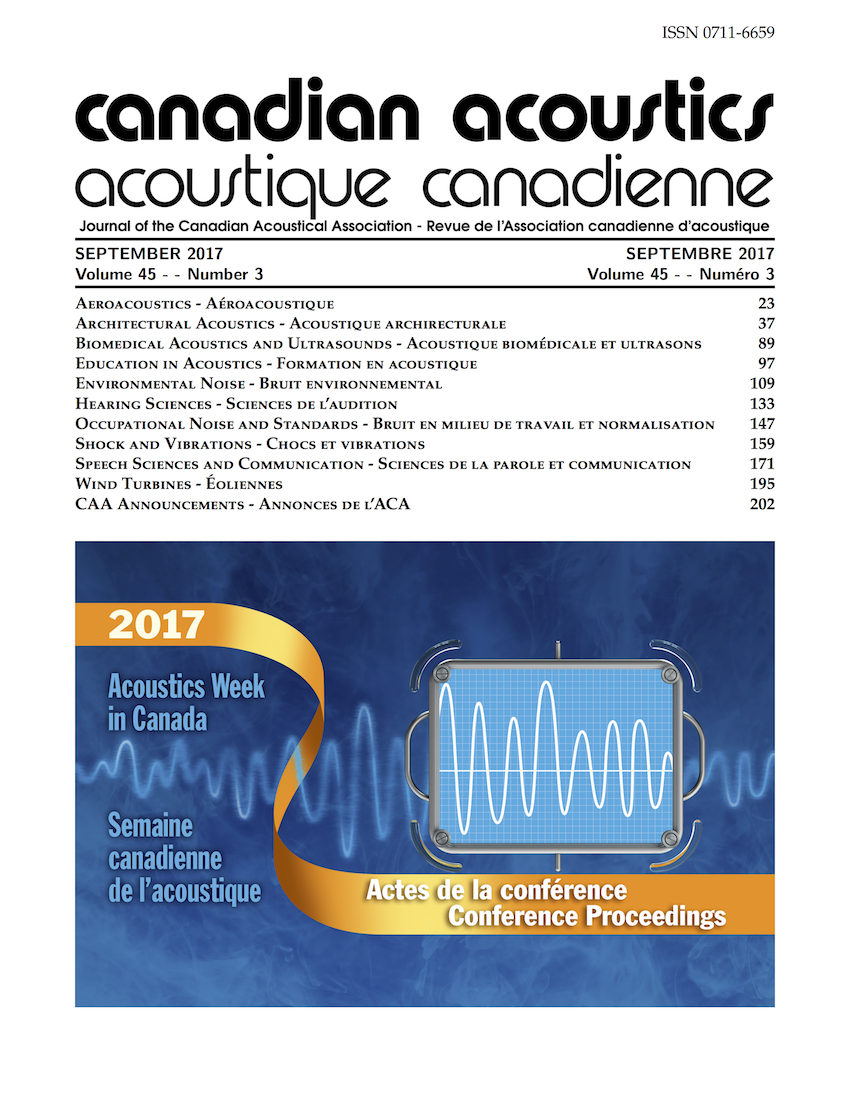Effect of Duct Height on the Magnitude of Acoustic Resonance for Single Cylinder in Cross-flow
Abstract
Flow-excited acoustic resonance in industrial applications, such as tube bundles of heat exchangers is a major concern due to its harmful effects. If not treated, flow-excited acoustic resonance may lead to excessive vibrational loads on the tube bundles, which could subsequently result in structural failure and critical equipment damage. In this paper, the effect of the duct height on the self-excited acoustic resonance mechanism of single cylinders in cross-flow is experimentally investigated for the first acoustic cross mode. Three duct heights of 203, 254 and 305 mm and seven cylinders of diameters in the range between 10.56 – 28.5 mm are used in the investigation. Changing the height of the duct changed the frequency coincidence at which resonance occurred, thus the acoustic damping and stiffness of the system were changed. It was found that as the duct height increases, the stiffness of the system decreases, and the system becomes weaker and more susceptible to acoustic resonance. Moreover, increasing the duct height was found to decrease the acoustic damping of the system, which changed the magnitude of the acoustic pressure amplitudes at resonance, even when the dynamic head at coincidence is the same. The acoustic attenuation, due to the visco-thermal losses, for each duct was quantified theoretically by adapting the Kirchhoff acoustical damping model which takes into account the geometrical aspects of the duct. The results of experiments discussed in this paper shows that the damping of the duct is an important parameter that should be included in prediction criteria proposed for complex geometries such as tube bundles of heat exchangers.
Additional Files
Published
How to Cite
Issue
Section
License
Author Licensing Addendum
This Licensing Addendum ("Addendum") is entered into between the undersigned Author(s) and Canadian Acoustics journal published by the Canadian Acoustical Association (hereinafter referred to as the "Publisher"). The Author(s) and the Publisher agree as follows:
-
Retained Rights: The Author(s) retain(s) the following rights:
- The right to reproduce, distribute, and publicly display the Work on the Author's personal website or the website of the Author's institution.
- The right to use the Work in the Author's teaching activities and presentations.
- The right to include the Work in a compilation for the Author's personal use, not for sale.
-
Grant of License: The Author(s) grant(s) to the Publisher a worldwide exclusive license to publish, reproduce, distribute, and display the Work in Canadian Acoustics and any other formats and media deemed appropriate by the Publisher.
-
Attribution: The Publisher agrees to include proper attribution to the Author(s) in all publications and reproductions of the Work.
-
No Conflict: This Addendum is intended to be in harmony with, and not in conflict with, the terms and conditions of the original agreement entered into between the Author(s) and the Publisher.
-
Copyright Clause: Copyright on articles is held by the Author(s). The corresponding Author has the right to grant on behalf of all Authors and does grant on behalf of all Authors, a worldwide exclusive license to the Publisher and its licensees in perpetuity, in all forms, formats, and media (whether known now or created in the future), including but not limited to the rights to publish, reproduce, distribute, display, store, translate, create adaptations, reprints, include within collections, and create summaries, extracts, and/or abstracts of the Contribution.


